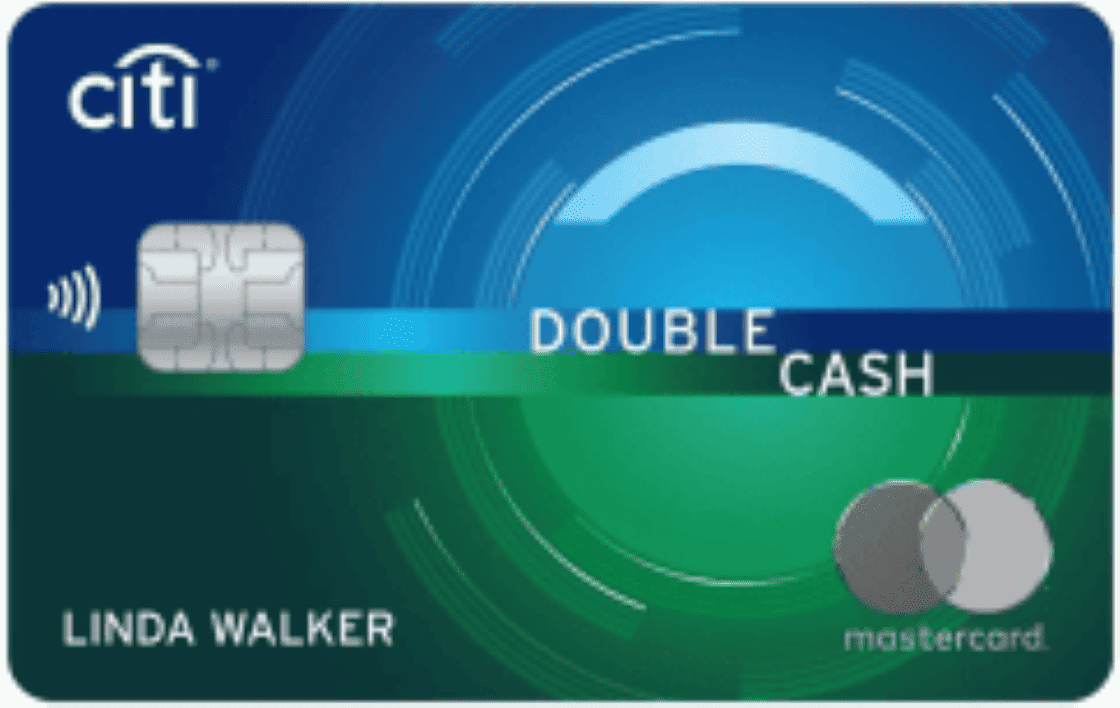Last Updated on July 3, 2024 by Archie Biggs
Your Guide to the Best Low-Interest Credit Cards
Our comprehensive, reader-friendly guide is designed to help you navigate the intricate maze of credit cards, specifically focusing on those with low-interest rates. In an age where credit cards have become an essential part of financial management, understanding the benefits and potential pitfalls is vital. This guide aims to enlighten readers on how to identify and optimize the benefits of low-interest credit cards.
What is a Low-Interest Credit Card?
A low-interest credit card, as the name suggests, is a credit card that offers a lower Annual Percentage Rate (APR) than the typical credit card. The APR is the cost of borrowing, expressed as a yearly rate. Lowering this rate can result in significant savings, especially for those who carry a balance from month to month.
Low-interest credit cards come in several forms, including cards with a permanently low APR and those offering a low introductory rate that rises after a specified period. Understanding these cards, their benefits, and their limitations can save cardholders significant sums and assist in effective financial management.
Unveiling the Mystery: The Average Interest Rate on a Credit Card
The average interest rate on a credit card – often called the APR – can vary widely based on several factors. These factors include the type of card, the cardholder’s creditworthiness, and the overall lending environment.
As of this writing, , the average APR for credit cards in the United States was approximately 24.14%. It’s crucial to bear in mind that this is merely an average; actual rates can be much higher or lower. Premium cards with high rewards often have higher APRs, while low-interest cards can offer rates significantly below this average.
A Roadmap to Getting a Credit Card with Low Interest
Securing a credit card with a low-interest rate might seem like a daunting task, but by following a systematic process, you can significantly improve your chances. Here are some key steps:
Start by understanding your credit score: Lenders use credit scores to determine the risk associated with lending you money. A higher score usually translates to lower interest rates because you’re considered less risky.
Next, compare different cards and lenders: This can help you identify the card that offers the best terms based on your needs and financial profile.
Consider cards offering introductory low rates: Some cards offer low introductory rates for a set period, typically 6 to 18 months. This can be beneficial, especially if you’re planning a large purchase that you intend to pay off within that period.
However, tread with caution: after the introductory period, the rate will typically rise, sometimes substantially. Make sure you understand the terms and conditions and are prepared for the rate increase when the introductory period ends.
Finally, consider seeking professional advice: Financial advisors can provide personalized advice tailored to your circumstances, assisting you in making an informed decision.
These steps, combined with the strategies outlined in this book, can help you secure a low-interest credit card and reap the associated benefits.
The importance of your credit score in securing a low-interest credit card cannot be overstated. The credit score is a three-digit number that encapsulates your creditworthiness, based on your credit history. Lenders use it as a predictive tool to gauge the risk of lending money to you. A higher score signifies lower risk, leading to more favorable loan terms, including lower interest rates.
Credit scores range from 300 to 850, with a score of 700 or above considered good. Various factors influence your credit score, including payment history, credit utilization, length of credit history, types of credit, and new credit inquiries.
Taking steps to improve your credit score can significantly increase your chances of securing a low-interest credit card. Begin by consistently paying your bills on time, as payment history is the most significant factor affecting your credit score. Reducing your credit utilization – the ratio of your outstanding credit card balances to your credit card limits – can also positively impact your score.
Regularly checking your credit report for errors and promptly addressing any discrepancies is another effective strategy. Remember, boosting your credit score is a process, not an overnight event. By being disciplined and consistent, you can gradually improve your score, opening the door to more attractive credit opportunities, including low-interest credit cards.
Research and Compare: The Key to Your Ideal Card
In the vast ocean of credit card offerings, doing diligent research and comparing cards can help you find the one that best suits your needs and financial situation. Start by defining your specific needs. Are you looking for a card with a permanently low-interest rate, or would a card offering a low introductory rate serve your purposes better?
Look beyond the interest rate and consider other factors, such as annual fees, late payment penalties, foreign transaction fees, and balance transfer fees. Also, consider any rewards or benefits offered, such as cash back, points, or travel rewards. Remember, though, that cards with more lavish rewards often come with higher interest rates.
Once you have identified several potential cards, compare them side by side. Look at the APR, but also consider the other factors mentioned above. A card with a slightly higher APR might still be the best choice if it offers other features that are valuable to you.
Reading the Fine Print: Uncovering the Hidden Details
When applying for a credit card, it’s vital to read the fine print. While the lure of low interest may be strong, understanding the full terms and conditions can prevent unpleasant surprises down the road.
Look for details about when the interest is charged and how it is calculated. Understand the consequences of late or missed payments. Is there a penalty APR, and if so, how high is it and how long does it last? If the card offers a low introductory rate, when does this rate end, and what will the new rate be?
The fine print may also include details about variable APRs, which can change based on the prime rate. If the card has a variable APR, it’s important to understand this and be prepared for the possibility of rate increases.
By paying attention to your credit score, doing diligent research, and carefully reading the fine print, you can significantly increase your chances of securing a low-interest credit card that serves your needs and supports your financial goals.
Aligning Your Needs: Applying for the Right Card
Securing the best low-interest credit card ultimately boils down to identifying and applying for the card that most closely matches your individual needs and financial profile. While a low APR is a vital factor, don’t let it blind you to other essential considerations such as annual fees, rewards, and other terms and conditions.
Start by outlining your financial goals. Are you looking to consolidate high-interest debt with a balance transfer card offering a low or 0% introductory rate? Or are you searching for a card to finance a significant purchase, with the aim of paying it off before the low introductory rate period ends? Perhaps you’re looking for a card to use for regular purchases, in which case a card with a consistently low APR might be the best fit.
Next, take a careful look at your spending habits. If you regularly spend in certain categories such as groceries or gas, you might benefit from a card offering cash back or points on these purchases, even if the APR is slightly higher.
Also, consider your payment habits. If you’re disciplined about paying your balance in full each month, the APR may be less crucial, and a card offering higher rewards may be more beneficial.
By aligning the card with your needs and financial habits, you can maximize the benefits and minimize the costs, leading to healthier financial management.
Weighing It Up: The Pros and Cons of Low-Interest Cards
Like every financial tool, low-interest credit cards have their pros and cons. On the upside, a low APR can result in significant cost savings, particularly if you carry a balance from month to month. Low-interest cards can also be a powerful tool for debt consolidation, allowing you to transfer high-interest balances and pay them off at a lower rate.
However, there are potential downsides to be aware of. Low-interest cards often have fewer rewards and benefits than their higher-interest counterparts. If you are a disciplined payer who clears the balance each month, you may benefit more from a higher-reward, higher-interest card.
Additionally, many low-interest cards offer a low introductory rate that rises after a specified period. If you’re not prepared for this increase, it can result in higher costs down the line.
Understanding these pros and cons can help you make an informed decision about whether a low-interest card is right for you.
Picking the Perfect Fit: How to Choose a Low-Interest Card
Choosing a low-interest card that fits you perfectly involves a combination of careful consideration, diligent research, and an understanding of your financial habits and goals.
Begin by identifying your primary reason for seeking a low-interest card. This could be to save on interest charges, consolidate debt, finance a significant purchase, or some combination of these.
Next, conduct diligent research to identify potential cards that meet your needs. Use online comparison tools, read reviews, and consider seeking advice from a financial advisor.
When comparing cards, look beyond the APR to the other terms and conditions. Consider factors like penalty APRs, balance transfer fees, and annual fees. Also, examine the rewards and benefits and consider how well they align with your spending habits.
By applying this systematic approach, you can significantly increase your chances of finding a low-interest card that fits you like a glove, maximizing benefits and minimizing costs.
The Ideal Candidate: Who Should Get a Low-Interest Card?
Not everyone will benefit from a low-interest credit card. Indeed, the ideal candidates for such a card fall into specific categories. If you regularly carry a balance on your card, a low-interest credit card could potentially save you a significant amount in interest charges over time.
Individuals with high-interest debt spread across multiple cards could also benefit from a low-interest credit card. By transferring these balances to a low-interest card, they could consolidate their debt and potentially pay it off faster thanks to the lower interest rate.
Moreover, if you’re planning a significant purchase that you won’t be able to pay off immediately, a low-interest card – particularly one with a low or 0% introductory rate – can help you finance this purchase at a lower cost.
Before you apply, it’s vital to assess your personal and financial circumstances thoroughly to ascertain if a low-interest card is indeed the best option for you.
Beware the Pitfalls: Who Should Not Get a Low-Interest Card?
While a low-interest card can be a powerful financial tool, it’s not suitable for everyone. If you always pay off your credit card balance in full each month, a low-interest card offers you little benefit. The interest rate is irrelevant if you never carry a balance. Instead, a rewards card might provide more value in this scenario, earning you cash back, points, or travel miles on your purchases.
Furthermore, individuals with poor credit may not qualify for low-interest cards. These cards often require good to excellent credit. In this case, a secured card or a card designed for individuals with poor credit may be a more attainable goal.
Finally, it’s worth noting that low-interest cards often come with fewer perks and benefits. If you’re interested in premium rewards, travel benefits, or extensive purchase protections, a card with a slightly higher interest rate might be more beneficial.
Maximizing Benefits: How to Make the Most of a Low-Interest Card
Once you’ve secured your low-interest card, it’s vital to use it strategically to maximize its benefits. If you’ve chosen a card with a low introductory rate, plan your spending to take full advantage of this period. This could be an excellent time to make significant purchases or transfer high-interest balances.
However, it’s crucial not to fall into the trap of overspending. Just because you have a low interest rate doesn’t mean you should spend recklessly. Aim to pay off your balance in full each month if possible. If you can’t, at least make more than the minimum payment to minimize the interest charges and reduce your balance faster.
Also, avoid late payments. Not only can these incur a penalty fee, but they can also potentially trigger a penalty APR, which could be significantly higher than your regular rate.
By using your low-interest card responsibly and strategically, you can take full advantage of its benefits and avoid potential pitfalls. This can help you manage your finances more effectively, reduce your debt faster, and potentially save you a significant amount of money in the long run.
Wrapping Up: The Conclusion
Low-interest credit cards can be a powerful financial tool, offering significant potential benefits, especially for those who carry a balance or wish to consolidate high-interest debts. However, they also have potential pitfalls, and they’re not suitable for everyone.
To determine if a low-interest card is right for you, it’s essential to assess your financial situation, spending habits, and financial goals thoroughly. If you decide to pursue a low-interest card, diligent research and comparison of potential cards is crucial to find the one that best matches your needs.
Once you’ve secured your card, it’s vital to use it strategically and responsibly to maximize its benefits. This involves planning your spending, avoiding late payments, and aiming to pay off your balance in full each month or as much as you can manage.
By following these guidelines, you can potentially save significant amounts on interest charges, reduce your debt faster, and manage your finances more effectively.
Frequently Asked Questions About Low-Interest Credit Cards
What credit score do I need to qualify for a low-interest credit card?
Typically, to qualify for a low-interest credit card, you’ll need a good to excellent credit score. This usually means a score of 700 or above, although some cards may require a score of 750 or higher. Your credit score is a measure of your creditworthiness, and lenders see a higher score as a sign that you’re less risky to lend to. This leads to more favorable terms, such as lower interest rates. If your credit score is below this threshold, it may be beneficial to focus on improving your score before applying for a low-interest card.
Can I transfer balances from other credit cards to a low-interest card?
Yes, most low-interest credit cards allow you to transfer balances from other credit cards. This can be a powerful strategy if you have high-interest debt spread across multiple cards. By consolidating this debt onto a single low-interest card, you can simplify your payments and potentially pay off your debt faster due to the lower interest rate. However, be sure to check whether the card charges a balance transfer fee, as this could affect the cost-effectiveness of the transfer.
What happens when the introductory rate on my card ends?
Many low-interest cards offer a low or 0% introductory rate for a specified period, often ranging from 6 to 18 months. After this period ends, the interest rate will increase to the standard rate specified in the card’s terms and conditions. It’s essential to be aware of when this rate increase will occur and what the new rate will be. If you’re carrying a balance, this could lead to significantly higher interest charges.
Do all low-interest credit cards have an annual fee?
Not all low-interest credit cards have an annual fee. Many cards offer a low interest rate without charging an annual fee. However, some cards do charge an annual fee, often in return for additional rewards or benefits. It’s important to consider the annual fee when comparing cards, as this can significantly affect the overall cost of the card.
Are there low-interest credit cards that offer rewards?
Yes, there are low-interest cards that offer rewards such as cash back, points, or travel miles. However, these cards often have a slightly higher interest rate than cards that don’t offer rewards. If you regularly spend in certain categories or travel frequently, the benefits of these rewards might outweigh the slightly higher interest rate.
What is a variable APR?
A variable APR is an interest rate that can change based on an index interest rate, such as the prime rate. If your card has a variable APR, it’s important to understand that your interest rate could increase if the index rate rises.
What is a penalty APR?
A penalty APR is a higher interest rate that can be triggered if you violate the card’s terms and conditions, such as by making a late payment or going over your credit limit. If your card has a penalty APR, it’s essential to avoid these triggers to prevent the higher interest rate.
How does credit utilization affect my credit score?
Credit utilization is the ratio of your outstanding credit card balances to your credit card limits. A lower credit utilization can positively impact your credit score. If you’re carrying a high balance on your credit cards, this could negatively affect your credit score, even if you’re making your payments on time. To improve your credit score, aim to keep your credit utilization below 30%.
What are the benefits of low-interest credit cards?
Low-interest credit cards can offer several benefits. They can result in significant cost savings if you regularly carry a balance. They can also be a powerful tool for debt consolidation, allowing you to transfer high-interest balances and pay them off at a lower rate. In addition, if you’re planning a significant purchase, a low-interest card can help you finance this at a lower cost.
What are the drawbacks of low-interest credit cards?
While low-interest credit cards offer several benefits, they also have potential drawbacks. If you always pay off your balance in full each month (good for you), a low-interest card offers little benefit, as you’re not paying interest anyway. In addition, these cards often have fewer rewards and benefits than higher-interest cards, and they often require a good to excellent credit score to qualify.
The 2023 Smart Buyer’s Guide to the Best Six Low-Interest Credit Cards
Citi® Double Cash Card

Intro Offer - 0% intro APR on balance transfers for 18 months
Annual fee - $0
Regular APR - 19.24% - 29.24% (Variable)
Credit Needed - Good, Excellent





